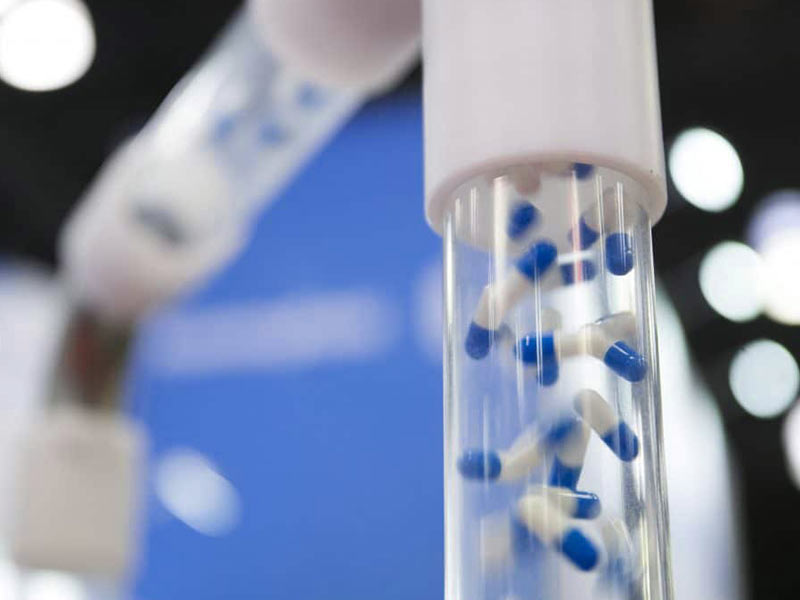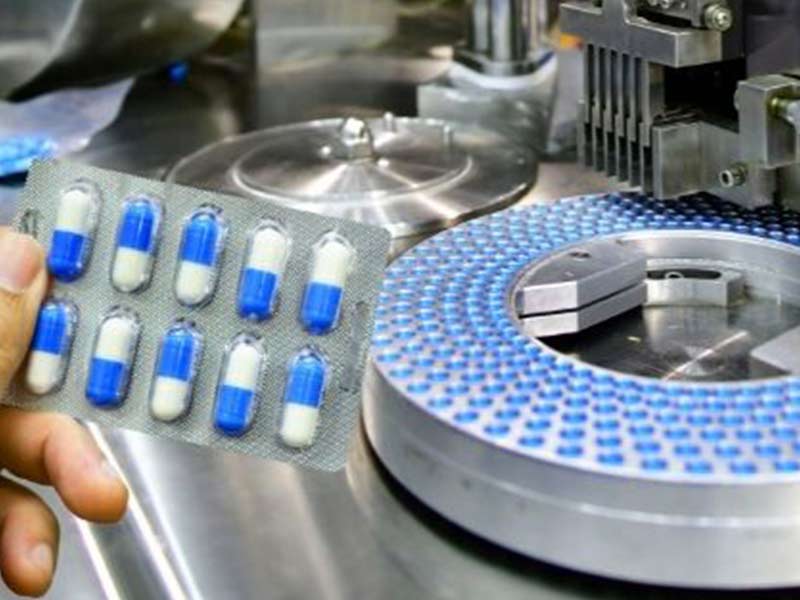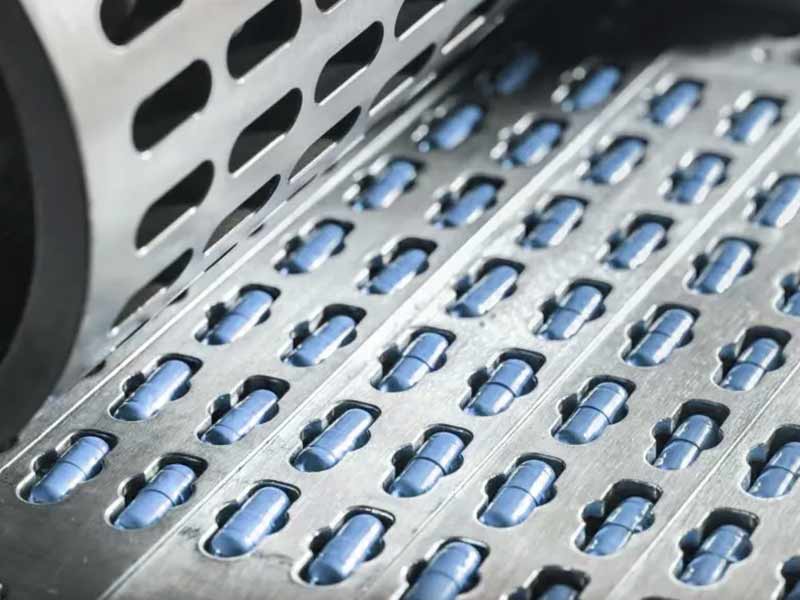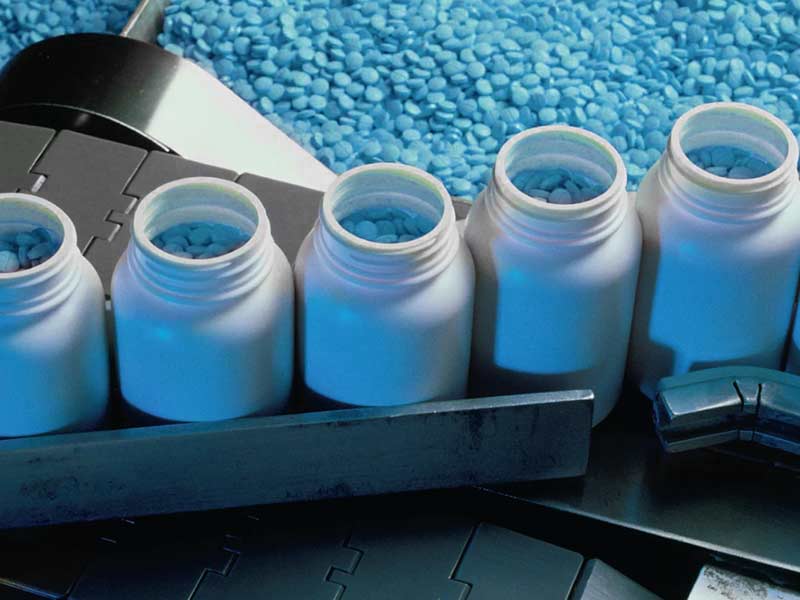Many “accidents” encountered in the process of process scale-up are predictable. If you can pay more attention to some details, do some simple experiments, and collect some data during the small test, it will be of great help for the future scale-up process of pharmaceutical processes.
The glass flask used in the test generally does not have corrosion problems (glass is not resistant to hydrofluoric acid and compounds that may decompose to generate fluorine, hot concentrated alkali). However, the compatibility of materials in production must be considered, which is also the requirement of GMP for equipment selection. If you can consider doing a corrosion test of the material during the small test (adding stainless steel or other material test pieces to the reaction system), it will save time when selecting equipment in the future.
Simply measuring the bulk density of the filter cake is beneficial to the estimation of the product filter cake volume and equipment selection in the future production. The filtration speed has a certain relationship with the filtration area and the thickness of the filter cake.
1 Typical Magnification Problems
The most common problem in process scale-up is the change of reaction selectivity, which can affect the yield and purity of the product, which is mainly due to the inconsistency of the mixing effect of the small scale and the production. If the impact of the rotational speed has been evaluated in the small test, when a problem occurs, the cause will be quickly found. The reactors in the pilot plant are equipped with variable frequency speed regulation, which can be adjusted appropriately to determine the appropriate speed.
It is also common for new crystal forms to appear during scale-up.

During the scale-up, there will be problems in the separation of the product. The washing effect of the filter cake in the production cannot reach the level of the pilot test, and the impurities cannot be completely washed away. The three-in-one filtration, washing and drying equipment with stirring can replace the centrifuge under certain process conditions. Using the three-in-one equipment can directly add solvent for washing and beating after filtration, and the washing effect is better than that of the centrifuge.
Another reason for the scale-up problem is the impact of production operation time. It is necessary to conduct experiments on the effect of extended time on products in small trials. In actual production, due to the prolongation of distillation time, the product is decomposed, and side reactions occur many times.
The reasons for the amplification problem, the lack of understanding of the reaction mechanism, crystallization and mixing are the three most common reasons. In the following, we can see that although there are many problems related to mixing and heat transfer, the fundamental lies in the understanding of chemistry. In addition to the main reaction, what other side reactions will occur? What conditions will promote the occurrence of side reactions? What will change in scale-up? What effect do these changes have on reaction selectivity? In actual production, the heat transfer conditions of the current reactor basically cannot be changed (the local subcooling/heating can be reduced by controlling the temperature difference between the heating, cooling medium and the system in the reactor, and the heating/cooling speed). Mixing can be improved by choice of rotational speed and paddle type.

2 What Needs To Be Done When Scaling Up
1) Teamwork
A stable, scalable process can only be achieved through the close cooperation of different professionals. Chemists have a deep understanding of the impact of various variables on product quality. Process engineers have a better understanding of what operations are not feasible or safe in production.
At the same time, as mentioned earlier, there are many tests that chemists can perform early in process development. For example, in experiments of drying and distillation, record physical parameters such as pressure and density of the material system.
2) Principles Of Process Development And Operation
Regardless of the size of the company, some basic rules need to be developed to ensure the safe transfer of small-scale processes to the kg laboratory and pilot plant.
Establish clear and strict procedures and documents that need to be provided by the quiz, withstand pressure, and strictly enforce even when time-limited requirements are required. These materials include production operating procedures, and there are three batches of small-scale tests carried out according to the operating procedures, and at least one batch of raw materials of the same specification is used and produced. Cleaning validation protocols to avoid the possibility of cross-contamination. Process safety analysis data.
Although the above requirements will affect “efficiency”, under strict implementation, there have been no serious accidents and failed batches for scale up for many years.
3) Equipment Account
Establish operation and maintenance logs for the main equipment (reactors, filters, dryers, pumps, etc.) of the kilo laboratory and pilot plant, including batch records, cleaning records, verification records, and other maintenance records.

4) Sample Database
Establish a sample database to collect and organize data for each sample (product, wet cake, distillate, process by-products), including production batch number, collection time, analysis results, etc. These data have important reference value, and the collection and arrangement can ensure that the data will not be lost. For research and regulatory reasons, it is often necessary to re-analyze these samples for confirmation, and a constant mass calculation can be performed.
5) Sample Preservation
With the establishment of the sample database, it is necessary to set up a special sample room to store the samples, and pay attention to drying, avoiding light and low temperature. It is important to have a system in place so that the required samples can be found quickly when needed.
6) Fixed Process
Identify and resolve relevant issues prior to trial production. It is dangerous to change the process at the last minute before scale-up, which may cause accidents and safety problems.
7) Process Risk Assessment
A risk assessment should be carried out before the trial production of the new process. An assessment team should be composed of personnel from different departments to conduct a detailed review of the entire process safety and preventive measures.
There is no 100% safe process, but according to the evaluation results, corresponding measures can be taken to avoid or reduce safety accidents.
8) Determine The Reaction Energy
Lack of awareness or identification of the hazards of exothermic reactions can be a major cause of major injuries and accidents. In production, the heat transfer area per unit volume of the reactor is much smaller than that of the small-scale flask. The heat transfer area of the 500ml flask is about 0.02㎡, while the heat transfer area of the 4000L reactor is only 10.7㎡.

A safe scale-up reaction therefore requires calorimetric or similar experiments. The work in this area is gradually attracting our attention. Although no serious accidents have occurred, punching in production has occurred from time to time. In the pilot stage, it is necessary to avoid the use of compounds containing high-energy functional groups (such as compounds containing multiple amine groups, tetrazolium, hydrazine hydrate), and the reactions that may generate free radicals and gas-generating reactions should be given enough attention, and it should be described clearly during process transferring.
9) Establish Production Operation Procedures
Needless to say, the importance of the production operation procedures, the important thing is to ensure the timeliness of the procedures and minimize text errors. The use of “copy-paste” when editing a document is convenient, but it can also lead to inadvertent errors. This is also the importance of repeating the experiment in the small test according to the process specification.
10) Raw Materials
The experiment uses industrial-grade raw materials, and conducts small-scale experiments on all raw materials before expansion. In this way, if the scale-up is unsuccessful, the cause of the raw material can be directly eliminated. In addition to the chemical purity of the raw materials, physical properties also affect the reaction, such as the particle size of the solid material.
11) Seize The Opportunity
Preparing for pilot production requires a lot of labor, time and money. Many times, however, only limited data is collected. That’s why it’s important to take advantage of every batch opportunity to learn as much as possible. A detailed sampling and analysis plan can help complete mass balance calculations, identify unanticipated by-products and address other possible scale-up issues. Each process stream (including waste) is weighed and sampled. There is no other opportunity to collect as much data as the pilot
All observations should be recorded, and isolated intermediates and samples should be retained for future use. Take the opportunity to collect as much scale-up data as possible and make a detailed summary analysis of production into a report for future reference.

Verification is required during production transfer. Before that, it is necessary to conduct trial production to become familiar with the process, and to determine the process and operating procedures. If the trial production goes well, the verification time will also be shortened. The success of trial production depends on the depth of research on process issues in the early stage of small-scale research and development and pilot-scale testing.
3 Things To Avoid When Scaling Up
1) Avoid Complexity
Be as simple as possible in process development and scale-up, the simpler the less chance of process error. In actual operation, the more complicated the process, the more difficult it is for operators to master, and it is also difficult to describe in detail through operating procedures.
Simplification is not only from safety considerations, but also can reduce production cycle, reduce waste and so on. Avoid reactions using very specific equipment, or very dangerous reactions that require safety facilities, such as nitration, hydrogenation, etc.
The simplification of the process comes from the simplification of the reaction route, and the route with the least number of reaction steps is often the best route. In the process development stage, it is necessary to consider whether it is possible to avoid the separation of intermediates, combine reactions, and reduce the type and quantity of solvents used.
2) Avoid Putting All Raw Materials Into Reheating
One of the most dangerous operations in the process is adding all the reactants together and then warming the reaction. Likewise, do not add catalyst after the final feed. The danger is that once the reaction mixture reaches the reaction temperature to start the reaction, there is no way to stop it. Some reactions are highly exothermic and heat up to higher and higher temperatures on their own. If the boiling point of the mixture is reached, it will boil or even boil. Some feedstocks will degrade at higher temperatures, and the degradation will self-accelerate, and the exotherm will be more severe than the reaction itself. When the reaction requires emergency cooling, switching and cooling are not as convenient and quick as a small test.
Of course, for reactions that have been understood and determined to be safe, a single input of raw materials is acceptable. However, it should be prohibited for the first scale-up process.

The most commonly used control of exothermic reactions is to use a reagent dropwise, and the dropwise addition time depends on the heat of the reaction and the heat transfer capacity of the reactor. During dropwise addition, to avoid the accumulation of raw materials and cause a sudden reaction, it is necessary to dropwise at a suitable temperature to ensure that the dropped raw materials can react immediately, such as a lattice reaction.
3) Avoid Heating Without Stirring
During production, the heat transfer in the reactor mainly relies on stirring. In addition to ensuring safety, good agitation can reduce temperature differences in the kettle and make temperature readings more accurate. Generally, the temperature of the kettle wall will be higher than the temperature of the center of the system, which will cause local overheating, product decomposition or coking, and ultimately affect the output and quality. Also do not stop stirring until the reaction is complete and cooled to a safe temperature.
For example, an accident occurred due to a strongly exothermic reaction between organic amines and sulfuric acid. According to the process, the amine needs to be slowly added to the hot sulfuric acid with vigorous stirring, and the reaction is a biphasic system. One day, the operator was replaced, and the amine was added without stirring, and the amine was precipitated at the bottom of the reactor without reaction. Later, another employee found that the stirring was not turned on, and started the stirring. At this moment, all the materials reacted instantly and caused an explosion.
4) Don’t Ignore Potential Degradation Reactions
Do not perform the reaction within 50°C of the known degradation temperature of the reactants to avoid runaway reaction. In addition to the calorimetric assessment of exothermic reactions, self-accelerating degradation reactions also need to be investigated. This requires additional experiments, such as adiabatic reaction calorimetry (ARC), which should be performed if the analysis suggests that the reaction may produce potentially unstable easily degradable products.

Some degradation reactions may proceed so slowly that they cannot be identified by routine testing. Even below the initiation temperature, the exotherm of the reaction will increase at a small rate, and by the time it is found that the temperature rises significantly, the decomposition reaction has occurred.
During the diazotization reaction in a domestic raw material pharmaceutical factory, in the heat preservation stage, the operator closed the steam valve and left to eat. Due to the internal leakage of the steam valve, the reaction temperature rose and the diazonium salt was decomposed. Due to the unattended operation, the temperature rise was not detected in time. When the workers on duty returned to work and found that the temperature had risen abnormally, the reaction could no longer be controlled, and eventually an explosion occurred and the entire workshop was destroyed.
5) Avoid Adding Solids To The Reaction Mixture
Do not throw solids into a refluxing or hot reaction mixture. This is a common operation in small tests, but it is difficult to implement in production. Dosing in divided doses is to control the reaction, which is easy to implement in a small test. However, when adding solid materials in production, the manhole must be opened, and the existing solvent vapor in the kettle will form an explosive gas mixture with the air. If the material reacts quickly, the material liquid will be ejected from the manhole (similar accidents have occurred when sodium and hydrogen are injected).
An improvement is to consider adding the solid first, followed by the solvent. However, changing the feeding sequence may affect the selectivity of the reaction. In addition, the solid can be dissolved and added, or even formed into a slurry and then pressed into the reaction kettle.
If it is impossible to change the process, it is necessary to consider how to carry out the dosing under closed conditions from the engineering aspect. There have been attempts and improvements in this regard, such as the use of vacuum feeding, etc., but there is still no economical, good and universally applicable solution, especially for some solid raw materials and intermediates with corrosive, highly toxic and poor fluidity.
6) Avoid Evaporation To Dryness

The operation of concentrating the feed liquid to dryness using rotary evaporation is very common in small experiments. But most reactors in the workshop have about 10–20% minimum stirring volume. When the feed liquid is concentrated to the end, it is inevitable that the feed will be heated without good stirring. The hazards of heating without agitation have already been mentioned. This can cause safety and quality issues. When evaporating to dryness is to replace the solvent, the latter solvent is added and dragged repeatedly when it is evaporated to a certain volume, which can avoid the operation of concentration to dryness, but this depends on the relative volatility of the two solvents and whether they are azeotropic. A more efficient way is to use “constant volume distillation”.
The process of concentrating to dryness is very common in our production. If the process provided by the pilot process is concentrated to dryness, the production will also be implemented. The operation of concentrating to dryness may be relatively simple, but it is uncontrollable and has no measurement standard. Only when there are problems with subsequent yield and quality will it be found that the previous steaming may not be dry enough. The agitator shaft was broken, and the solvent replacement was incomplete, resulting in a drop in yield. After concentration, the agitation was not good to quench the punching material. Therefore, it is necessary to consider whether there is a better process to realize it during research and development.
7) Avoid Underestimating Process Time
Perhaps the biggest surprise to someone new to process scaling is that all operations take so long. It is important to perform all stability assessments involving starting materials, intermediates and products prior to scale-up. Avoid reactions that must be quenched and isolated immediately after the reaction.
8) Avoid Neglecting Solvent Usage Issues
Solvents with good solubility and easy recovery by distillation may be used in small experiments. But some of them are to be avoided in production. This includes all class of solvents with a flash point below -18°C. The flash point of n-hexane is -23 ℃, and the conductivity is poor. Generally, foreign companies are prohibited from using it in production, and heptane is used instead. However, due to cost issues, it is still used in some processes.
The toxicity of dichloromethane is lower than that of other chlorinated alkane solvents (chloroform, dichloroethane, etc.), but it should be avoided as much as possible. In some processes, methyl tert-butyl ether and toluene can be used instead.

9) Avoid Neglect Of Quenching And Extraction
Many upscaling problems arise from post-processing. It should therefore be given the same attention as the response. The upper layer to avoid delamination is waste. Extraction is often the step with the largest solvent volume, and in order to increase the productivity per unit volume, the solvent used for extraction should be minimized. With the increase of the amount of solvent, the time of layering and discharging is also prolonged, and the phenomenon of emulsification may be aggravated. In weak acid/base environments, prolonged extraction and separation time may lead to hydrolysis of compounds containing easily hydrolyzable functional groups.
When an API intermediate is scaled up to 80 tons/year, one step of extraction requires 2000L solvent extraction twice, a total of 4000L solvent, and the solvent transfer takes three or four hours.
As a common extraction solvent, ethyl acetate is easily hydrolyzed to produce acetic acid in an acid/alkaline environment, thereby enhancing the acidity of the system. It can be replaced by more stable isopropyl acetate or butyl acetate, and the solvent has a lower saturated water content and is easier to recover
10) Safety
Safety is the most important. The emphasis here is not to risk reacting the limited raw materials at one time. Be prepared for possible failure, especially with new processes. Can be done in two batches or smaller to avoid project suspension due to running out of all ingredients. At the same time, the smaller batch has a higher unit heat transfer area, the mixing problem will be reduced, and the amplification factor will be reduced accordingly.
4 Summary
Experience is important in a timely, successful scale-up process. At the same time, there are many excellent references worth studying and adopting. Although it is impossible to predict all surprises at first scale-up, the considerations listed above will lead to further consideration of process development and scale-up, while realizing the importance of collaboration will increase the chance of success.










